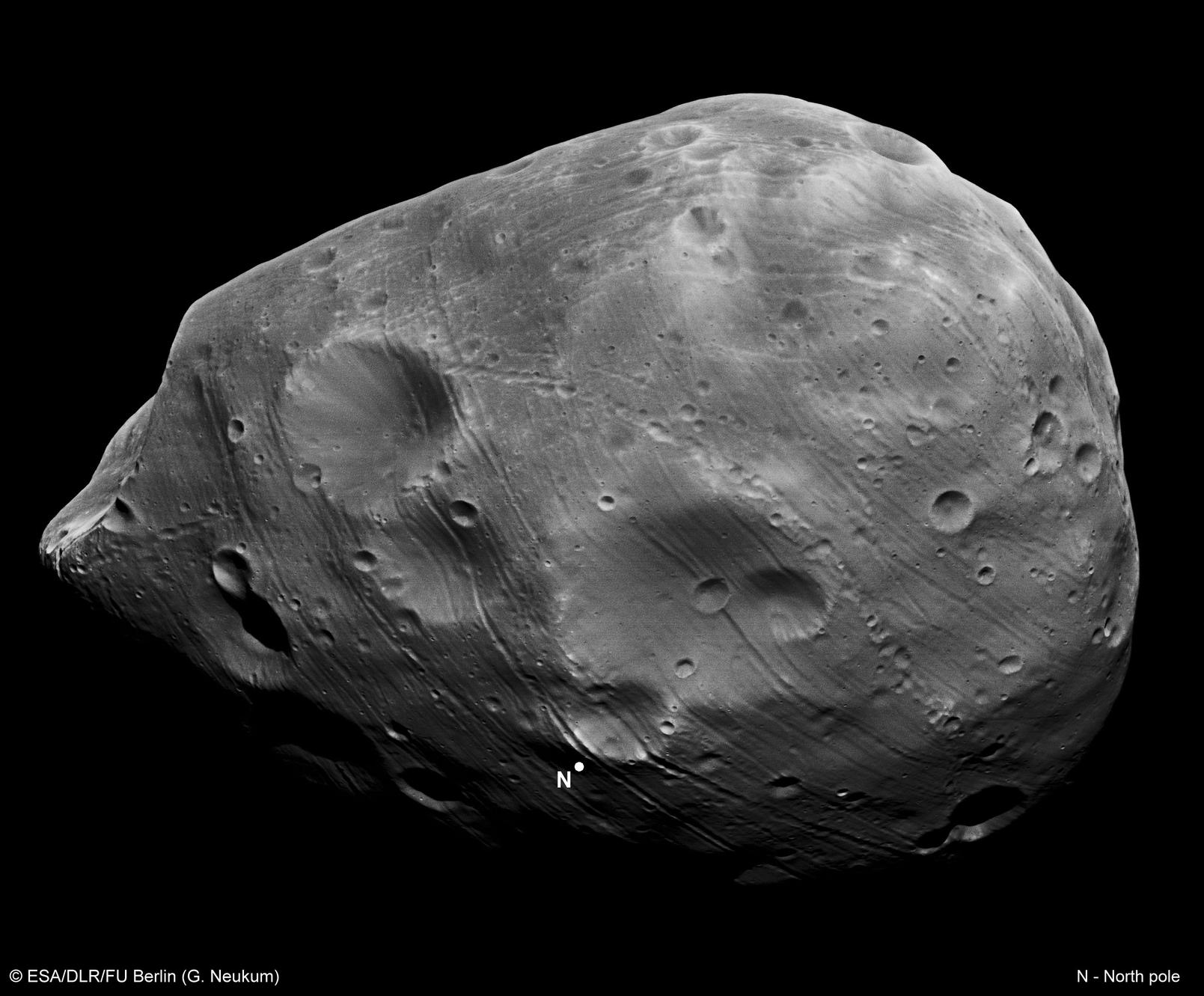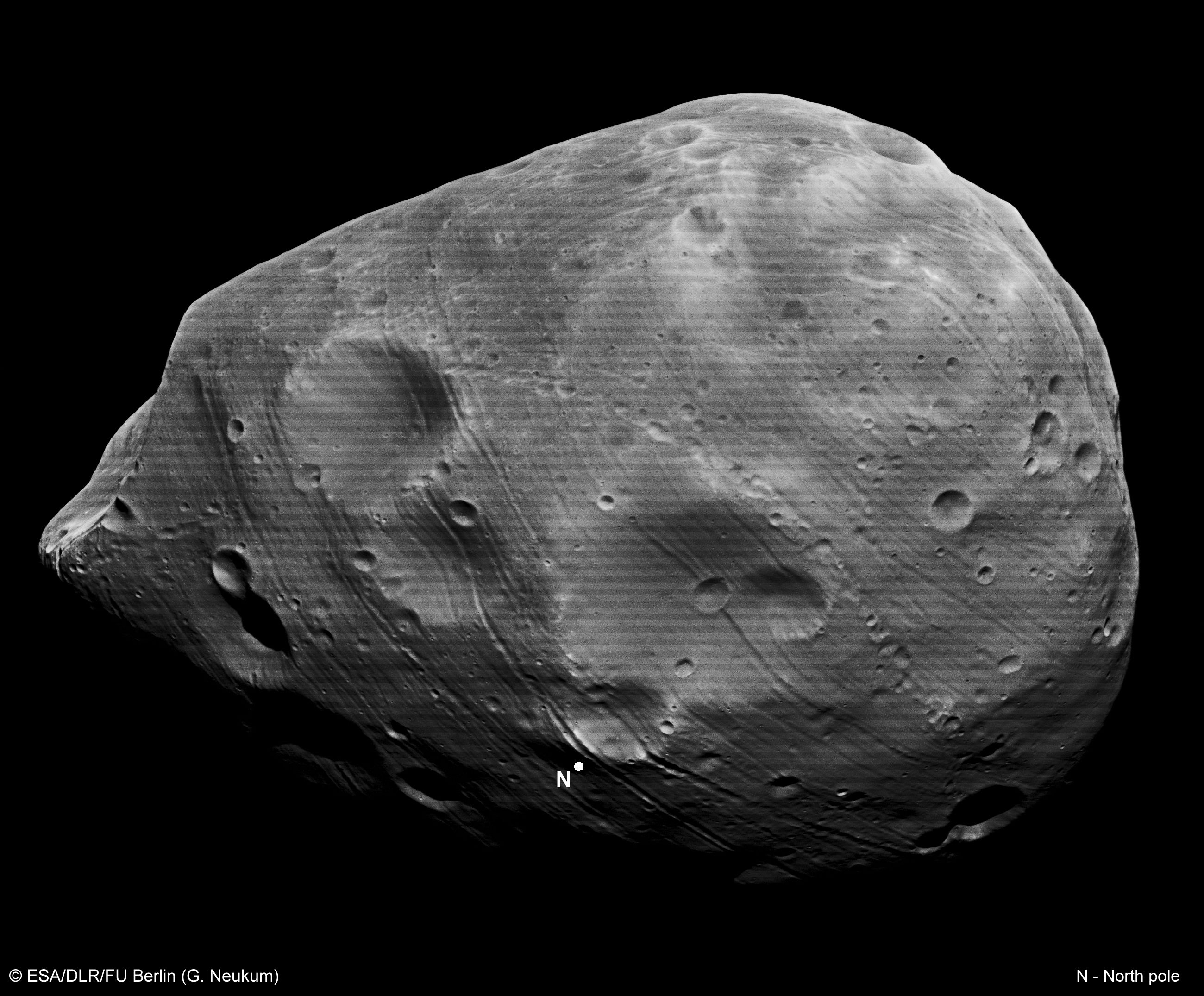Crater Chain on Phobos

| Credit | ESA/DLR/FU Berlin |
|---|---|
| Language |
|
The origin of Phobos, the larger of the two moons orbiting Mars, remains unknown. Phobos and Deimos appear very similar to C-type asteroids, yet gravitationally capturing such asteroids, circularizing their orbits, and dragging them into Mars' equatorial plane seems unlikely. This image is of Phobos as it appeared during a flyby of ESA's Mars Express, a robotic spacecraft that began orbiting Mars in 2003. Visible in great detail is Phobos' irregular shape, strangely dark terrain, numerous unusual grooves, and a spectacular chain of craters crossing the image center. Phobos spans only about 25 kilometers in length and does not have enough gravity to compress it into a ball. Phobos orbits so close to Mars that sometime in the next 20 million years, tidal deceleration will break up the rubble moon into a ring whose pieces will slowly spiral down and crash onto the red planet.

